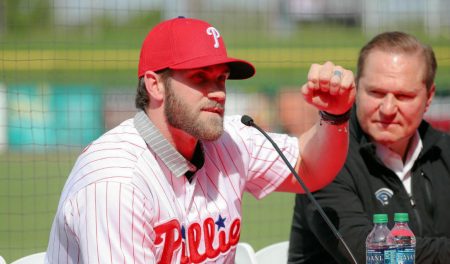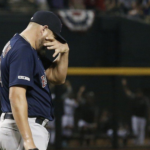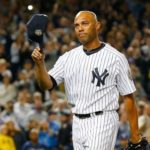Nationals Used Harper and Ramos Money to Win Now
 The Washington Nationals recently shocked the juggernaut Los Angeles Dodgers and are now on to the NLCS, which surprised a lot of people. The team even making the playoffs also surprised people due to the losses of Wilson Ramos in 2018 and most prominently Bryce Harper this offseason.
The Washington Nationals recently shocked the juggernaut Los Angeles Dodgers and are now on to the NLCS, which surprised a lot of people. The team even making the playoffs also surprised people due to the losses of Wilson Ramos in 2018 and most prominently Bryce Harper this offseason.
While I knew the Nationals would still be competitive and have a winning record due to playing well in the past with those guys injured, I didn’t expect a playoff appearance—let alone an upset of the deepest and most talented team in baseball.
Why that all happened is that the Nationals used the money they would’ve had to pay those two players to finally realize what wins in the postseason. While Harper and Ramos weren’t the only reason they lost in the playoffs previously (they still were bad though), what they formed instead has helped them be pesky and build the identity of a modern postseason baseball—even with less overall talent.
The first reason I believe in this is lineup depth. No matter how your team is structured star player wise, lineup depth has always been key to succeeding in the postseason. The Nationals’ issues in previous postseasons came from a lineup that was too top-heavy. So when stars such as the aforementioned Harper and Ramos struggled, they had little production offensively, especially against other talented National League pitching staffs.
This year, they were able to keep players such as Howie Kendrick and Matt Adams, as well as signing guys such as Yan Gomes, Brian Dozier, Gerardo Parra and Asdrubal Cabrera. While those names aren’t flashy, they all were productive for the Nationals lineup this year.
Dozier had 20 home runs. Gomes had 12 as a part-time catcher platooning with Kurt Suzuki. Cabrera had 40 RBIs in 38 games after being signed off waivers. Adams had 20 home runs and 56 RBIs platooning with Ryan Zimmerman. Kendrick was especially good hitting .344 with 17 home runs and 62 RBIs.
This isn’t production they were getting with the more top-heavy lineup the Nationals had in previous playoff appearances, and they have the depth now where they can be more analytics-driven and platoon guys based on matchups. While manager Dave Martinez wasn’t great on the execution of those matchups, as most of those players besides Kendrick struggled in the postseason, the Nationals were a team that never had the ability to even test that previously.
Going back to my original point, those contracts to those veterans, whether signing this offseason or retaining, probably wasn’t possible if they signed back Bryce Harper, especially once being close to the luxury tax penalty.
And looking at it overall, the production of half of those veterans combined with the amazing seasons of Anthony Rendon and Juan Soto, the Nationals put just as many wins on the field including a postseason series win.
The second big part of a modern postseason identity is pitching depth and versatility. In a micromanaging and analytics era, the Washington Nationals never have had the bullpen depth, and probably still don’t. However, what teams like the Houston Astros and Boston Red Sox have shown in recent years that it’s not just raw, traditional bullpen talent that win either.
The Astros probably don’t win in 2017 without Charlie Morton, Lance McCullers and Brad Peacock coming out of the bullpen. Besides Peacock, none of those guys had prominent bullpen experience.
For the Red Sox, Nathan Eovaldi coming out of the bullpen and dominating helped boost a pitching staff that had question marks all season. Eovaldi also had very little experience pitching as a reliever, but was able to transition smoothly. The Nationals, despite also trying to bring in relievers in previous years, adopted this formula by spending a lot of money on Patrick Corbin.
While guys like Gio Gonzalez and Tanner Roark gave the Nationals dominant starting pitching depth to go along with aces Max Scherzer and Stephen Strasburg, Corbin took it to another dimension, and it showed during the season and into the postseason. Going back to the postseason identity, all three starters pitched well out of the bullpen as a result, rather than having to force Strasburg and Scherzer to pitch for extra length.
Also, it keeps them from having to dive into their shaky bullpen depth, and even going to big names that struggled in Washington such as Kelvin Herrera, Mark Melancon, and this year Kyle Barraclough. Going back to the money, the Nationals would’ve never been able to give Corbin 6 years and $140 million dollars, and never would be able to operate the starters out of the bullpen system as effectively.
Lastly, I think these departures have allowed other players with more postseason success to strive in key spots in the batting order. Trea Turner, who hit .318 and 2 steals in the 2016 NLDS, strived again higher in the batting order, hitting .286 with a .348 on-base percentage.
Anthony Rendon has played like an MVP candidate throughout the regular season, and has continued that into the playoffs as well, hitting .412 with a .455 on-base percentage, 1 home run and 5 RBI’s. Rendon, hitting lower in the batting order in previous postseasons, has had some shaky batting averages (.150 in 2016, .176 in 2017), he still was good at driving in runs. Now hitting cleanup, which was prominently Harper or Zimmerman in the past, he has strived both individually and taking the team to new heights.
Lastly, there is their “new Bryce Harper” in Juan Soto, who got the two biggest hits for the Nationals in the postseason, the 3-run double off Josh Hader in the Wild Card game and the second home run off Clayton Kershaw in Game 5 of the NLDS. Overall, Soto hit .273 with 2 home runs and 6 RBIs in his first postseason, and doing it all hitting third, which probably doesn’t happen with Harper or Ramos in the middle of that lineup, especially for somebody 20 years old.
With Bryce Harper having just a .211 career average and 10 RBIs in 19 playoff games and Wilson Ramos hurt in 3 of the 4 postseason appearances, which combination do you think is more productive? With more quality (and quantity), I’ll take the group they have now.
























